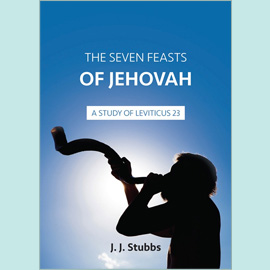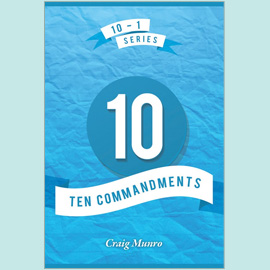Scribes
In Old Testament times scribes produced the hand-written copies of the Scriptures and then explained them. For instance, Ezra was "a ready scribe in the law", "a scribe of the words of the commandments of the Lord", even though he was also a priest (Ezra 7.6,11; Neh 8.1–13; see also 1 Kings 4.3). However, by New Testament times the work of the scribes had widened considerably. After a lengthy period of training starting at around the age of fourteen (following half-day synagogue school previously), when they were old enough, around thirty years of age, they were allowed to draft all kinds of legal documents to do with wills, conveyancing of property, marriage contracts, bills of divorce, loan agreements, inheritance documents, mortgages, etc., being paid according to the number of lines written! Even a village would have at least one scribe, who in part operated like a modern solicitor. Also, in those days not everyone could read or understand Hebrew, so ordinary people relied heavily on the scribes when necessary.
In the synagogues the scribes were well respected, so "the scribes and the Pharisees sit in Moses’ seat" (Mt 23.2), that is, they occupied the position of experts in Moses’ law and how it applied to everyday life. Whilst they taught what kind of lives people should lead, the Lord Jesus said that their own lives did not match up (Mt 7.29; Mt 23.2,13-33); "Do as I say, but don’t do as I do" seemed to be their motto! Scribes wore special long robes and were always given seats of honour at public gatherings, such as the synagogue, in the market place, and at weddings (e.g. Mk 12.38–40; Lk 20.46), and they were looked up to as role models of Jewish society. However, the Lord Jesus pronounced many woes upon them, and addressed them as, "Ye serpents, ye generation of vipers, how can ye escape the damnation of hell?" (Mt 23.33). Thus these men, who ought to have been examples to others, were publicly denounced by the Son of God because their practice denied what they taught.
Many of the scribes, lawyers, and doctors were Pharisees (Acts 23.9), but of course not all Pharisees were scribes! Then we might well ask how those described as lawyers and doctors related to the scribes? In simple terms, we can say that the three groups of people were essentially one and the same. Supporting this is the fact that the words "scribes" and "lawyers" (or doctors) are never found together in the Gospels. Also, if Matthew 22.35 and Mark 12.28 describe the same incident (the Newberry Bible thinks so), Matthew uses the word "lawyer" while Mark has "scribe". At any rate, the designations "lawyers" and "doctors" (our word "doctor" comes from the Latin for "teacher") are, with one exception, Matthew 22.35, used only by Luke, and he uses the technical term for "lawyer" in some passages where Mark and Matthew have "scribe". Some have suggested that the word "lawyer" was more familiar than "scribes" to Luke’s mostly Gentile readers, while others think that while the scribes were the more public men, the lawyers and doctors were trained scribes who taught in law schools (Lk 10.25–28), usually in Jerusalem. This was certainly true for Paul’s teacher Gamaliel (see Acts 5.34 and 22.3).
A further complaint that the Lord Jesus had against the scribes - and the Pharisees who supported them - was their fanatical promotion of the "traditions of the elders (or fathers)". These traditions were the individual decisions about the every-day application of the Law of Moses to daily life, and had been accumulated over hundreds of years from the conclusions of many former Jewish teachers, memorised by the scribes, and passed on from mouth to mouth and from generation to generation as the tradition of the elders. This "oral law" was considered very important, especially in days of great Gentile infiltration into Jewish everyday life via Greek ideas. Although the transmission of this "oral law" was in the hands of the scribes, they did not teach authoritatively themselves, but just passed on the opinions of former teachers (Mt 15.2). On the other hand, the Lord Jesus’ Jewish audience "were astonished at his doctrine [i.e. teaching]: For he taught them as one having authority, and not as the scribes" (Mt 7.28-29; Mk 1.22). The Pharisees – religious laymen - greatly supported this idea of tradition and were closely allied in this with the scribes and doctors (teachers) of the law - the professionals. Paul said about himself, a Pharisee, that before his conversion he was "more exceedingly zealous of the traditions of my fathers" (Gal 1.14), compared with his contemporaries.
However, the Lord Jesus was very critical of this great attention paid to the oral law since it was held to be superior to the actual written, inspired word of God, the Old Testament scriptures. (Even Josephus, the Jewish historian, who was himself a Pharisee, admitted that "The Pharisees have imposed upon the people many laws taken from the tradition of the Fathers, which are not written in the Law of Moses".) Among other things, the scribes taught that the traditions of the fathers contained 248 positive precepts, things that must be done, which they said was the same as the 248 "vital" parts of the human body. At the same time they said there were 365 negative precepts – things which must not be done - as many as the days in one year. The sum of these happens to be 613, which also happens to be the number of Hebrew letters in the Ten Commandments!
Then, for instance, the scribes, lawyers and teachers of the Law had found in the written Law 39 different kinds of work which were forbidden on the Sabbath; but then in the oral Law each of these types of work was further expanded to include 39 sub-categories of work, resulting in 1,521 different kinds of work which were prohibited on the Sabbath! For example, they taught that if a laying hen produced an egg on the Sabbath the egg could not be eaten. However, if the hen was being kept especially for fattening-up and not for laying, the egg could be eaten because it would be considered to be a part of the hen that had simply fallen off! Also, shoes with nails were not allowed to be worn on the Sabbath since that could be considered to be the carrying of a burden. How proud they were of their detailed knowledge of such things, and how angry therefore they were at the Lord Jesus healing on the Sabbath (Jn 9.16). However, the Lord Jesus taught His corrective truth that "The sabbath was made for man, and not man for the sabbath" (Mk 2.27; see also Lk 14.3-4). This demolished their superior attitude.
At that time, an offence against these sayings of the scribes, and their teaching arising from the traditions of the elders, was considered by many to be worse than one against those of actual Scriptures. So when the Pharisees and scribes asked the Lord Jesus, "Why walk not thy disciples according to the tradition of the elders, but eat bread with unwashen hands?" (Mk 7.5), He criticised them saying:
• "For laying aside the commandment of God, ye hold the tradition of men, as the washing of pots and cups: and many other such like things ye do" (Mk 7.8).
• "Full well ye reject the commandment of God, that ye may keep your own tradition" (Mk 7.9).
• "Making the word of God of none effect through your tradition, which ye have delivered: and many such like things do ye" (Mk 7.13; see also Mt 15.3).
The Lord Jesus further said that the scribes’ obedience to the particulars of these external rules covered up their own deficiencies in their hearts, showing no true love to God or to others (see Mt 23.23; Lk 11.42 etc).
Since they were well represented in the Sanhedrin (Mk 15.1), the Lord Jesus held the scribes guilty along with the elders and chief priests of being mainly responsible for His death, since they were jealous of His influence (Lk 9.22; 19.47; 22.2,66-67). It was this group who asked Him, "Tell us, by what authority doest thou these things? or who is he that gave thee this authority?" (Lk 20.2).
To be continued.









